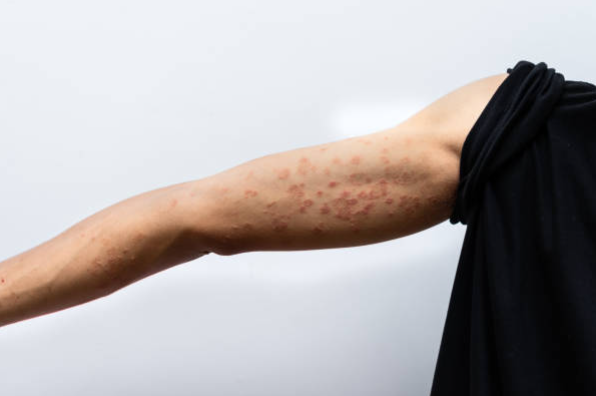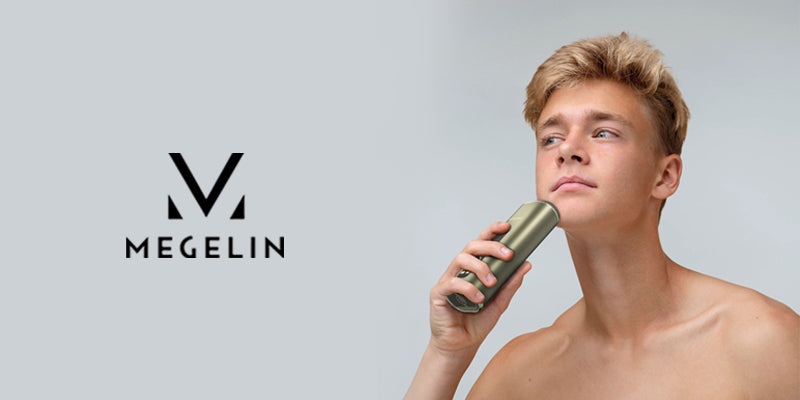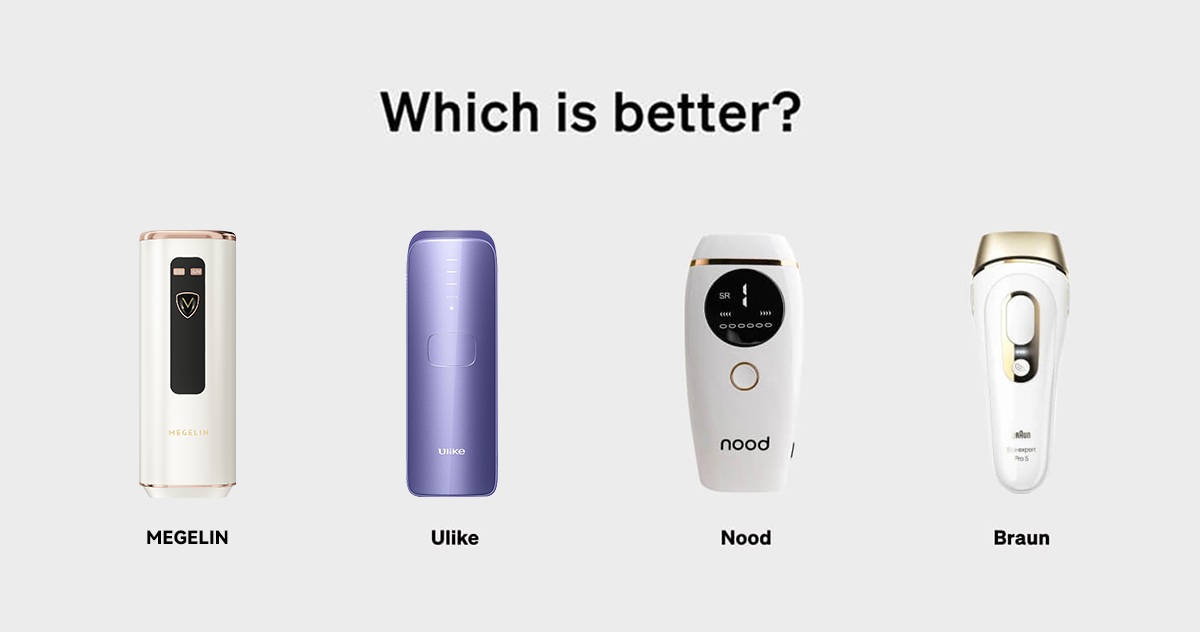
Is Red Light Therapy Effective for Guttate Psoriasis?
megelinbeautyResearch into treatments for chronic skin conditions like guttate psoriasis focuses on noninvasive options such as red light therapy. This therapy uses specific light wavelengths to potentially alleviate symptoms and promote skin healing without the side effects of traditional medications.
As interest grows in safe alternatives that reduce inflammation and improve skin health, understanding the effectiveness of red light therapy becomes crucial. This article explores guttate psoriasis, explains red light therapy, and offers practical guidance on its use, aiming to empower individuals with evidence-based insights for managing their condition effectively.
Understanding Guttate Psoriasis
Causes and Symptoms
Guttate psoriasis, a subtype of psoriasis, often manifests suddenly and is primarily seen in individuals younger than 30, though it can appear at any age. Typically triggered by an infection like strep throat, this condition is characterized by the appearance of small, round spots known as papules, which are raised and sometimes scaly. These papules, resulting from inflammation in the skin, predominantly appear on the arms, legs, and torso but may also develop on the face, ears, and scalp [1]. Common triggers aside from strep throat include upper respiratory infections, stress, skin injuries, certain medications, and even sunburn [2].
Current Treatment Options
The approach to managing guttate psoriasis varies based on the severity of the condition. Mild cases may be treated at home with topical cortisone or other anti-inflammatory creams, dandruff shampoos, coal tar lotions, and moisturizers. More severe instances might necessitate systemic treatments such as biologics, which alter parts of the immune system, or phototherapy, which involves exposing the skin to ultraviolet light [2]. It is crucial for individuals to consult with healthcare providers to tailor treatment plans that best suit their symptoms and medical history [1].
Challenges in Managing Guttate Psoriasis
Determining the severity of guttate psoriasis and the appropriate therapeutic approach can be particularly challenging due to its sudden onset and the potential for rapid symptom development. The disease's severity is often assessed using specialized scores that may not fully capture the unique aspects of guttate psoriasis, especially when the lesions are widespread and involve difficult-to-treat areas like the scalp or nails [3]. This makes it essential to consider both the physical and psychological impacts of the disease, ensuring that treatment plans are comprehensive and address all affected areas effectively [3].
What is Red Light Therapy?
Red Light Therapy (RLT) is a therapeutic technique that utilizes low-level wavelengths of red light to address various skin conditions and enhance healing processes. This method involves exposing the skin to a source of red light, such as LEDs or lasers, which penetrates the skin to stimulate cellular activity.
The Science Behind Red Light Therapy
The efficacy of Red Light Therapy is attributed to its ability to stimulate the mitochondria, the powerhouse of the cell, thereby enhancing energy production within cells [4]. This increase in cellular energy improves the function and repair of cells across the body. The specific wavelengths of red light used in RLT are absorbed by the skin, reaching the mitochondria where they encourage the production of adenosine triphosphate (ATP), boosting the cell's energy and facilitating various healing and rejuvenative processes [5]. Additionally, RLT is known to activate fibroblasts, which play a crucial role in collagen production, thereby aiding in skin repair and health [5].
Common Uses of Red Light Therapy
Red Light Therapy has been found beneficial for a variety of health and beauty concerns. Research indicates its effectiveness in treating skin issues like wrinkles, scars, and signs of aging, as well as medical conditions such as psoriasis and acne [6][7]. It is also used to promote wound healing, reduce inflammation, and alleviate pain, particularly in conditions like rheumatoid arthritis and tendinopathy [4]. Moreover, RLT is utilized to enhance skin complexion and increase collagen production, contributing to improved skin elasticity and texture [5].
Safety and Side Effects
While Red Light Therapy is generally considered safe and non-invasive, it is crucial to use it correctly to avoid potential side effects. Most side effects are associated with improper use, such as excessive exposure, which can lead to skin damage like burns or blisters [4]. It is also important to use eye protection during treatment to prevent eye damage from the intense light [6]. Despite these concerns, RLT does not emit ultraviolet rays and thus does not carry the risk of skin cancer associated with UV exposure [4].
In conclusion, Red Light Therapy offers a promising, noninvasive option for improving skin health and treating various medical conditions, supported by ongoing research and clinical trials. However, individuals should consult healthcare professionals to tailor treatments according to their specific health needs and ensure safety during usage.
Effectiveness of Red Light Therapy for Guttate Psoriasis
Clinical Studies and Research Findings
Red light therapy (RLT) has been extensively studied for its potential benefits in treating guttate psoriasis, a specific type of psoriasis characterized by small, drop-like lesions. Clinical studies have demonstrated that RLT can significantly reduce the severity and appearance of guttate psoriasis lesions [8]. The effectiveness of this treatment is attributed to its ability to improve the skin's appearance and reduce symptoms such as scaling, redness, and itching, which are commonly associated with this condition [8].
Comparative Analysis with Other Light Therapies
Comparative analyses have shown that red light therapy may be more effective than other light-based therapies, such as narrowband UVB, in treating guttate psoriasis [8]. This is particularly notable as RLT does not contain UV rays, making it a safer alternative for skin exposure compared to traditional UV-based treatments [9]. The specific wavelengths of red light used in RLT are absorbed by the skin, reaching the mitochondria where they encourage the production of adenosine triphosphate (ATP), which boosts the cell's energy and facilitates various healing and rejuvenative processes [5].
Patient Testimonials and Case Studies
Patients with guttate psoriasis have reported positive experiences with red light therapy, noting improvements in their skin condition and a reduction in the frequency and severity of flare-ups [8]. These testimonials support the findings from clinical studies and highlight the potential of RLT as a targeted treatment option for managing symptoms of guttate psoriasis. Additionally, the Light Treatment Effectiveness (LITE) study supports the use of home phototherapy, including RLT, as a first line treatment option, emphasizing its effectiveness and safety for treating guttate psoriasis across all skin types [10].
How to Use Red Light Therapy for Guttate Psoriasis
Consulting with a Healthcare Professional
Before initiating red light therapy (RLT) for guttate psoriasis, it is crucial to consult with a healthcare professional. This ensures the treatment aligns with individual health conditions and any concurrent medications, especially those increasing skin's photosensitivity. Dermatologists might combine RLT with medications in what is known as photodynamic therapy, particularly in a hospital setting [9].
Types of Red Light Devices Available
Various red light devices are available for treating psoriasis, ranging from light-emitting diodes (LEDs) to more sophisticated excimer lasers. These devices differ in intensity and the area they can cover. For localized psoriasis, targeted UVB light therapy using an excimer laser might be recommended, which exposes fewer UV rays and can reduce side effects [11]. For a more generalized treatment, LED panels or beds in specialized clinics or salons offer broader coverage [9].
Dosage and Frequency Recommendations
The effectiveness of RLT largely depends on the correct dosage and frequency. It is typically recommended to undergo RLT two to three times a week when beginning treatment. Once there is noticeable improvement, the frequency can be reduced to maintenance sessions. Each session should last between 10 to 30 minutes depending on the device's intensity and the treated area's size. Consistency is key, as irregular sessions can lead to suboptimal results [12].
Conclusion
Red light therapy (RLT) shows promise as a noninvasive treatment for guttate psoriasis, providing relief from symptoms without the side effects of traditional therapies. Clinical studies and patient testimonials highlight RLT's effectiveness in improving skin texture, reducing inflammation, and enhancing overall skin health. By using specific light wavelengths, RLT promotes skin repair at the cellular level. These findings suggest RLT as a safer and more comfortable alternative for managing guttate psoriasis. As research continues to explore RLT's mechanisms, it may revolutionize skin health treatments. Individuals should consult healthcare professionals to customize their RLT treatments for the best results.
FAQs
1. Can red light therapy benefit individuals with guttate psoriasis?
Red light therapy may be beneficial for those with psoriasis as it stimulates the skin and aids in healing. It is often used for healing scars, burns, and wrinkles. A study from 2012 found that both red and blue light therapies are effective in treating psoriasis.
2. What is the quickest method to clear up guttate psoriasis?
Currently, there is no cure for guttate psoriasis, and it typically clears up on its own within 3 to 4 months. The recurrence of the condition varies; some individuals may not experience it again, while others might see it return with another strep infection.
3. What are the recommended treatments for guttate psoriasis?
Common treatments for guttate psoriasis include phototherapy and oral medications. If the condition persists, health care providers might suggest a biologic treatment or a combination of different therapies.
4. How much time does each phototherapy session take for treating guttate psoriasis?
Phototherapy sessions for guttate psoriasis generally last about 15 minutes, though they can extend up to 30 minutes if additional preparation time is needed. Sessions should be spaced at least 24 hours apart.
References
[1] - https://www.psoriasis.org/guttate/
[2] - https://www.mountsinai.org/health-library/diseases-conditions/psoriasis-guttate
[3] - https://www.ncbi.nlm.nih.gov/pmc/articles/PMC9785802/
[4] - https://www.webmd.com/skin-problems-and-treatments/red-light-therapy
[5] - https://www.medicalnewstoday.com/articles/325884
[6] - https://www.mindbodygreen.com/articles/red-light-therapy-science-behind-light-benefits
[7] - https://www.healthline.com/health/red-light-therapy
[8] - https://www.healthcentral.com/condition/psoriasis/red-light-therapy-for-psoriasis
[9] - https://www.healthline.com/health/red-light-therapy-psoriasis
[10] - https://www.psoriasis.org/lite-study-home-phototherapy-aad/
[11] - https://www.healthline.com/health/psoriasis/phototherapy-treatment-options
[12] - https://www.psoriasis.org/phototherapy/











